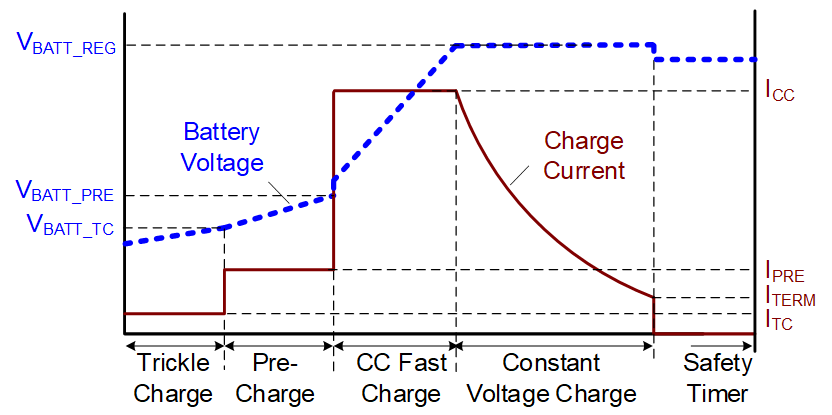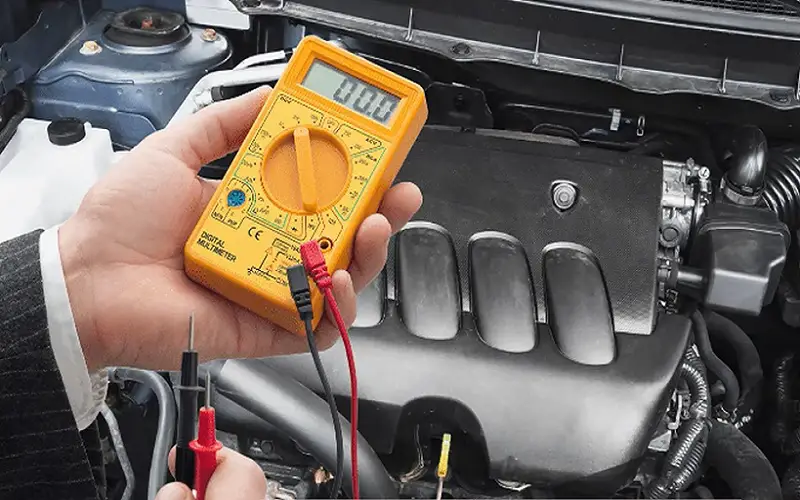A car battery charger should put out around 13.8 to 14.4 volts for optimal charging. This voltage range ensures efficient charging without damaging the battery or electrical system.
Ensuring that your car battery charger outputs the correct voltage is essential for maintaining the overall health and performance of your vehicle. By providing the right amount of voltage, you can prevent overcharging or undercharging, which can lead to decreased battery life and potential damage to your vehicle’s electrical components.
Understanding the ideal voltage range for a car battery charger will help you keep your battery in top condition and avoid unnecessary repairs or replacements.
Let’s delve deeper into the importance of the proper voltage output and how it impacts your vehicle’s overall functionality.
Contents
- Understanding Car Battery Chargers
- Importance Of Correct Voltage Output
- Ideal Voltage For Car Battery Chargers
- Factors Affecting Voltage Output
- Understanding Battery Charging Stages
- Safety Precautions For Car Battery Charging
- Frequently Asked Questions For What Voltage Should A Car Battery Charger Put Out
- Conclusion
Understanding Car Battery Chargers
Car battery chargers should typically put out a voltage between 13. 8 and 14. 4 volts for standard lead-acid automotive batteries.
This voltage range ensures effective charging without overloading the battery. It’s important to match the charger voltage with the battery’s requirements to prevent damage and optimize performance.
Car battery chargers are essential devices that are used to recharge car batteries and ensure they maintain optimal performance. It is important to understand how car battery chargers function and the voltage they should put out.
How Do Car Battery Chargers Work?
Car battery chargers work by supplying electrical current to the car battery, replenishing the charge that has been depleted through use. They use different charging modes to control the flow of electricity into the battery.
Different Types Of Car Battery Chargers
There are several types of car battery chargers available:
- Trickle chargers: Slowly charge the battery to prevent overcharging.
- Automatic chargers: Monitor the battery’s charge level and adjust the charging rate accordingly.

Importance Of Correct Voltage Output
Car battery chargers are essential tools for maintaining your vehicle’s battery health. When it comes to charging, the importance of correct voltage output cannot be overstated.
The voltage output of a car battery charger directly impacts the charging process, the battery’s longevity, and overall performance.
Why Is The Voltage Output Important?
The voltage output is crucial because it affects the rate at which the battery charges and the overall health of the battery. Using the correct voltage output ensures that the charging process is efficient and does not damage the battery.
Effects Of Incorrect Voltage Output
Incorrect voltage output can lead to overcharging or undercharging the battery, potentially damaging its cells and shortening its lifespan.
It may also cause electrical system malfunctions in the vehicle, leading to costly repairs. Ensuring the voltage output is correct is vital to prevent these issues and maintain the battery’s optimal performance.
Ideal Voltage For Car Battery Chargers
The ideal voltage for car battery chargers plays a critical role in maintaining the health and performance of your vehicle’s battery.
Understanding the ideal voltage for car battery chargers is essential to ensure a safe and effective charging process for different types of batteries.
It is important to consider various factors to determine the ideal voltage to prevent overcharging or undercharging, which can lead to damage and reduced battery lifespan.
Recommended Voltage For Different Types Of Batteries
When selecting a car battery charger, it’s crucial to consider the recommended voltage for different types of batteries. Lead-acid batteries, commonly found in most vehicles, typically require a charging voltage ranging from 13.8 to 14.4 volts for optimal performance.
On the other hand, AGM (absorbent glass mat) and gel cell batteries may require slightly different charging voltages, typically between 14.1 and 14.7 volts to ensure efficient charging without causing damage.
Factors To Consider In Determining The Ideal Voltage
Several factors should be taken into account to determine the ideal voltage for car battery chargers. Battery size and capacity play a crucial role in selecting the appropriate charging voltage, as larger batteries may require higher voltages to ensure thorough charging.
Temperature also impacts the ideal charging voltage, with colder temperatures requiring slightly higher voltage to compensate for reduced battery efficiency.
Moreover, charger quality and specifications should be considered to ensure they are compatible with the specific voltage requirements of the battery.
Additionally, charging stage must be taken into account, as different stages of charging may require varying voltages to accommodate the battery’s state of charge.

Factors Affecting Voltage Output
Input Voltage And Charging Capacity
Higher input voltage ensures efficient charging with the right capacity.
Battery Condition And Temperature
The condition of the battery and the temperature influence the voltage output.
Understanding Battery Charging Stages
A car battery charger should output voltage based on different charging stages to safely replenish the battery. Understanding battery charging stages is crucial for optimal performance and longevity of the car battery.
Ensure the charger provides the necessary voltage during each stage for effective charging. When it comes to keeping your car battery charged and in optimal condition, understanding the different stages of battery charging is essential.
By knowing these stages, you can ensure that your car battery charger is delivering the right voltage at the right time, maximizing the lifespan and performance of your battery.
Initial Bulk Charging
The first stage of battery charging is known as initial bulk charging. This stage delivers a high voltage to quickly replenish the charge in a deeply discharged battery.
The charger provides a constant current output to quickly bring the battery voltage up to a specific level. This stage should be performed until the battery reaches around 80% to 90% of its maximum charge capacity.
Absorption Charging
Once the initial bulk charging stage is complete, the charger switches to absorption charging. In this stage, the charger maintains a constant voltage output while gradually decreasing the charging current.
This allows the battery to absorb the remaining charge efficiently and ensures a complete charge.
Absorption charging typically takes longer than initial bulk charging but ensures that the battery is fully charged without overcharging, which can lead to battery damage.
Float Charging
After the battery has reached its maximum charge capacity, the charger switches to float charging. This stage provides a lower voltage to keep the battery at a fully charged state without overcharging it.
The charger continuously monitors the battery voltage and adjusts the output accordingly to maintain the battery’s charge level.
Float charging is designed to maintain the battery’s charge when it is not being used, such as during periods of vehicle storage. This stage eliminates the risk of overcharging and prevents the battery from self-discharging.
Understanding these different stages of battery charging is crucial for ensuring the longevity and performance of your car battery. By using a charger that can deliver the right voltage at each stage, you can keep your battery properly charged and avoid premature failure.
Safety Precautions For Car Battery Charging
When charging a car battery, it’s important to know the appropriate voltage that a car battery charger should put out. Follow safety precautions to prevent overcharging or damaging the battery.
Using The Right Charger For Your Battery
Using the correct charger for your car battery is crucial to ensure safe and efficient charging. Using an incompatible charger may lead to damage or even explosion of the battery.
1. Check the voltage and current rating of your battery before purchasing a charger. Match the charger’s specifications to your battery to avoid any issues.
2. Read the manufacturer’s instructions to understand any specific requirements or limitations associated with your battery charger.
Avoiding Overcharging And Undercharging
Overcharging or undercharging your car battery can significantly reduce its lifespan. To prevent these problems, follow these safety precautions:
1. Set the charger to the correct voltage and current that is suitable for your battery. This information is usually provided in the battery’s manual or on the battery itself.
2. Use a charger with an automatic shut-off feature that stops charging once the battery is fully charged. This prevents overcharging and avoids the risk of damage to the battery.
3. Monitor the charging process to ensure the battery is being charged properly. Avoid leaving the charger unattended for a long period of time to prevent any accidents.
Proper Handling And Maintenance Of Charger
Handling and maintaining your battery charger correctly will ensure its longevity and safe operation:
1. Inspect the charger regularly for any signs of damage, such as frayed cords or loose connections. If any issues are found, discontinue use and have it repaired or replaced.
2. Keep the charger clean and dry to prevent any water or moisture damage. Avoid using the charger in wet conditions to minimize the risk of electric shocks.
3. Store the charger in a cool, dry place away from direct sunlight or extreme temperatures. This will help prolong its lifespan and prevent any potential fire hazards.
Following these safety precautions will ensure that your car battery is properly charged and maintained, extending its lifespan and preventing any accidents or damage to your vehicle.
Frequently Asked Questions For What Voltage Should A Car Battery Charger Put Out
How Much Voltage Should A 12 Volt Battery Charger Put Out?
A 12 volt battery charger should output around 13 to 14 volts to ensure proper charging.
What Is The Output Voltage Of A Car Battery Charger?
A car battery charger typically outputs 12 volts, commonly used for charging automotive batteries efficiently.
What Should The Output Be On A Battery Charger?
The output on a battery charger should match the voltage rating of the battery being charged. For example, a 12-volt battery should have a 12-volt output on the charger.
What Is The Best Voltage For Car Battery Charger?
The best voltage for a car battery charger is typically 12 volts. It is important to ensure that the charger’s voltage matches the voltage of your car’s battery to avoid damage. Always check the manufacturer’s recommendations for your specific vehicle.
Conclusion
Choosing the right voltage for your car battery charger is crucial for optimal performance. Ensure compatibility with your vehicle’s requirements to avoid damage.
Consult the manufacturer’s recommendations. Remember, the correct voltage output is key to extending the life of your car battery and maintaining its efficiency.

